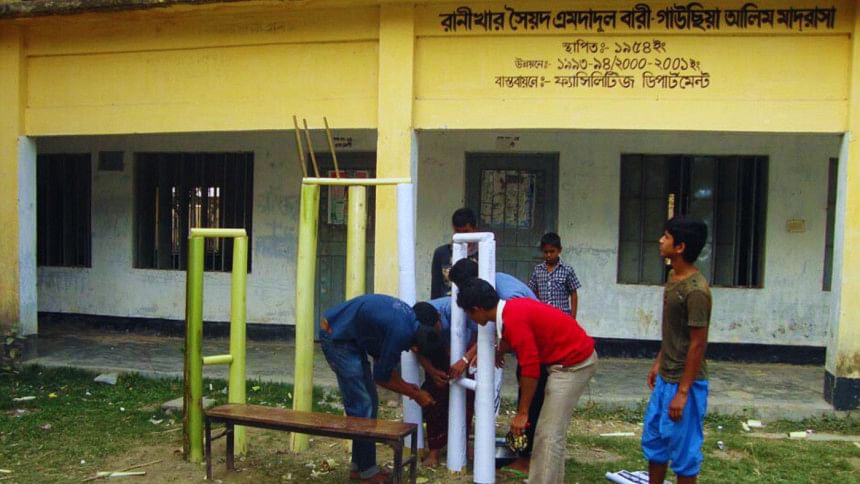No Shaheed Minar at 1,048 schools in Brahmanbaria

At least 1,048 educational institutions in Brahmanbaria district lack Shaheed Minars.
Many see this as a disservice to the legacy of language hero Dhirendranath Dutta. Dutta, who was from Brahmanbaria, was the first to advocate for Bangla to be recognized as the state language in the Pakistan National Assembly in 1948. He was later killed by Pakistani forces during the Liberation War in 1971.
Out of 1,515 educational institutions in the district, nearly two-thirds have yet to construct a Shaheed Minar, primarily due to inadequate government funding and a lack of attention from authorities.
While some institutions have set up temporary structures to commemorate International Mother Language Day on February 21, many do not even observe the day, disregarding government directives.
According to the district education office, only 273 out of 1,107 primary schools and 192 out of 408 secondary schools, madrasas, and colleges have permanent Shaheed Minars.
Md Shamsur Rahman, the district primary education officer, said school authorities have been encouraged to engage the community in constructing Shaheed Minars, but a lack of government funding poses a significant hurdle.
Poet Joydul Hossain, president of the Brahmanbaria Sahitya Academy, said despite the region's rich history in the Language Movement, many rural schools remain closed on February 21, undermining the day's significance.
"Besides Shaheed Dhirendranath Dutta, Brahmanbaria is home to many other language heroes. Unfortunately, so many educational institutions in the district lack a Shaheed Minar to commemorate this important day," he added. Harun-ur-Rashid, former commander of the Brahmanbaria Zilla Muktijoddha Sangsad, said without Shaheed Minars at their schools, rural students are deprived of understanding the historical significance of the day and cannot participate in urban commemorations.
He urged authorities to construct Shaheed Minars at all educational institutions in the district to ensure the legacy of the Language Movement is preserved for future generations.

 For all latest news, follow The Daily Star's Google News channel.
For all latest news, follow The Daily Star's Google News channel. 



Comments